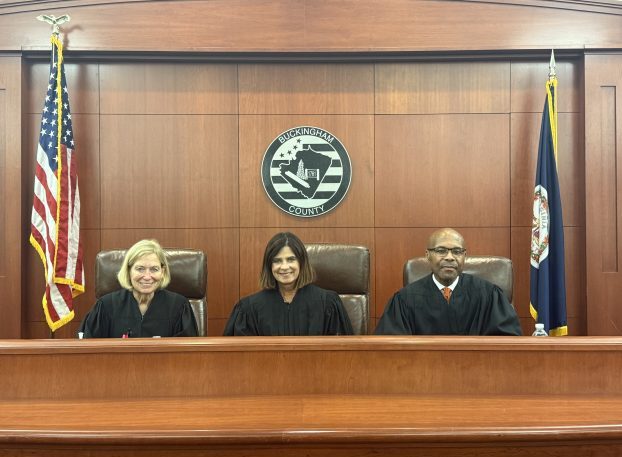In the dark a different light shines
Published 8:58 am Thursday, August 31, 2017
My husband and I just returned from a trip to Franklin, North Carolina where we went to view the Aug. 21 solar eclipse from within its path of totality, the area where the moon blocks 100 percent of the sun’s orb. Along with some other sun-inspired visitors, we set up a viewing spot in our hotel’s parking lot. Our equipment list included eclipse glasses, special solar binoculars and a generous supply of sunscreen.
On the designated Monday, the sky started out in a cooperative mood. A few clouds hugged a distant mountain to the northwest, but otherwise the sun sat in a clear blue expanse. With the solar binoculars, I could see a row of sunspots down the sun’s middle. These proved to be excellent markers for watching the eclipse progress.
The moon’s first nibble at the edge of the solar face took place at 1:06 p.m. An hour later, only a crescent sun remained. Subtle changes began to occur in the daylight. It felt similar to oncoming twilight, but the coloration was slightly askew. Some people said it seemed greener. To my eyes, it seemed bluer. Also, at that time, a large sheet of clouds began creeping up from the south. We fretted a bit and hoped for the best.
By 2:30 p.m., only a tiny sliver of the edge of the sun was visible and the twilight ambience intensified. A security light over a nearby building came on. The birds hushed. Clouds pushed closer and filled more of the sky.
At 2:35 p.m., the last remaining glowing arc of the sun’s surface disappeared. During the course of the same second, a cloud spread across the eclipsed sun and our view was completely blocked. We joined the gathered crowd in uttering a communal groan.
Nature must have heard our disappointment. Shortly afterward, a window through the cloud opened and we were rewarded with a spectacular view of the completely eclipsed sun and its shining corona. It looked like a dark circle, a black hole in the sky, surrounded by a vivid fringe of dazzling streamers. For this portion of the eclipse, the special glasses came off and we could look with unprotected eyes.
It wasn’t as dark as a moonless midnight, but the coronal light didn’t cast shadows the way a full moon can. Overhead, the sky resembled nautical twilight, the time when an evening’s first stars begin to come out. Yet, low in the west where clouds had been earlier, we could see a lighter, orange sky that looked akin to sunset. For a few moments, we spotted the brightly shining planet Venus through another judiciously placed hole in the clouds.
Over the course of the next two minutes and 30 seconds, the fully eclipsed sun and its corona flitted in and out of clouds. Then, just four seconds before 2:38 p.m., the leading edge of the sun emerged from behind the moon. That tiny sliver of sun produced enough light to wash out the corona completely, and we had to put our eclipse glasses back on. The sun’s light seemed to grow from a dawning, first-light stage to full-day brilliance almost immediately.
The moon continued moving on, and the local cloud cover diminished. One by one, the sunspots reappeared from behind the moon’s silhouette. By 4:01 p.m. the sun looked completely normal. It progressed through the rest of the afternoon as if nothing out of the ordinary had happened, but magic lingered in the conversations of those who had shared the spectacle.
Total solar eclipses occur more frequently than many people realize. They seem rare because the paths along which they can be viewed are typically limited to small regions. For example, on July 2, 2019 you can view a total solar eclipse in the South Pacific. If you prefer dry land, you can try Argentina on Dec. 14, 2020. For the next one relatively nearby, you have to wait until April 8, 2024. On that day, the path of totality will cross the U.S. beginning in Texas and extending into western New England. If you want a total eclipse in Farmville, just be patient. It will happen Sept. 14, 2099.
Karen Bellenir has been writing for The Herald since 2009. Her book, “Happy to Be Here: A Transplant Takes Root in Farmville, Virginia” features a compilation of her columns. Her email address is kbellenir@PierPress.com.





